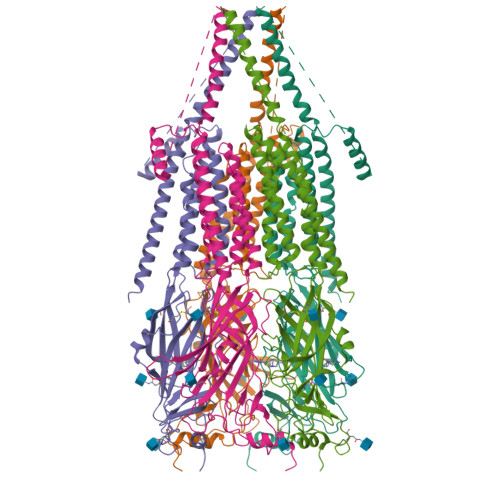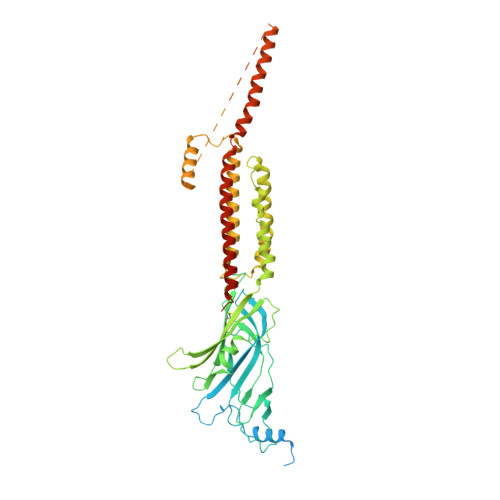Structural basis for partial agonism in 5-HT 3A receptors.
Felt, K., Stauffer, M., Salas-Estrada, L., Guzzo, P.R., Xie, D., Huang, J., Filizola, M., Chakrapani, S.(2024) Nat Struct Mol Biol 31: 598-609
- PubMed: 38177669
- DOI: https://doi.org/10.1038/s41594-023-01140-2
- Primary Citation of Related Structures:
8FRW, 8FRX, 8FRZ, 8FSB, 8FSP, 8FSZ - PubMed Abstract:
Hyperactivity of serotonin 3 receptors (5-HT 3 R) underlies pathologies associated with irritable bowel syndrome and chemotherapy-induced nausea and vomiting. Setrons, a class of high-affinity competitive antagonists, are used in the treatment of these conditions. Although generally effective for chemotherapy-induced nausea and vomiting, the use of setrons for treating irritable bowel syndrome has been impaired by adverse side effects. Partial agonists are now being considered as an alternative strategy, with potentially less severe side effects than full antagonists. However, a structural understanding of how these ligands work is lacking. Here, we present high-resolution cryogenic electron microscopy structures of the mouse 5-HT 3A R in complex with partial agonists (SMP-100 and ALB-148471) captured in pre-activated and open-like conformational states. Molecular dynamics simulations were used to assess the stability of drug-binding poses and interactions with the receptor over time. Together, these studies reveal mechanisms for the functional differences between orthosteric partial agonists, full agonists and antagonists of the 5-HT 3A R.
Organizational Affiliation:
Department of Physiology and Biophysics, Case Western Reserve University, Cleveland, OH, USA.


















